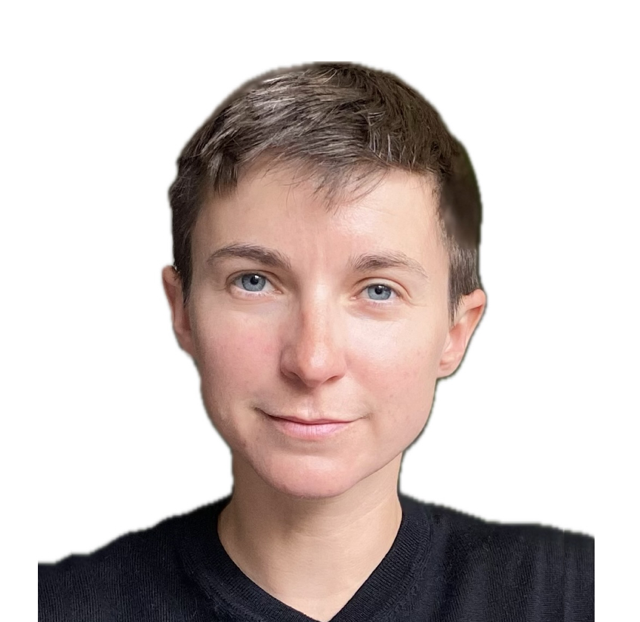
Bio
I lead a machine learning team at Apple that translates advances in research to applications in manufacturing. In my present role, my applied research focuses on domain adaptation and data-efficient machine learning. I am also interested in interpretability and improving control and safety in large language and multimodal models.
I have a PhD in Atomic, Molecular and Optical Physics from UC Berkeley, and professional experience as a technical leader, machine learning engineer, quantum engineer and startup founder. When I’m not working to understand our world or become a better manager, I enjoy woodworking, cycling, and hiking with my wife and dog. I am also a board member and volunteer assistant instructor at Impact Bay Area, where we teach self-defense under adrenaline.
Research
I am interested in applying and adapting cutting-edge approaches in artificial intelligence to improve product manfacturing, and in fundamental research into what models really learn. My work in physics also encompassed both applications in quantum computing and fundamental research into the nature of quantum mechanics.
Artificial Intelligence in Manufacturing

Successful applications of ML in manufacturing can reduce waste at a global scale while improving the quality of products produced. However, success in manufacturing requires exceptionally high model accuracy on data with low-diversity, a scenario that promotes model memorization and limits adaptability.
My team’s recent research leverages self-supervised pretraining and language-guided domain adaptation to reduce the volume of annotated device-specific data required to produce an effective model. I was an organizer and panelist for the 2024 VISION workshop at ECCV, which brought together an international community of researchers to tackle key challenges in Vision-based Industrial Inspection.
Interpretability, Alignment and Control of AI
With the rise of generative artificial intelligence, I have become increasingly interested in methods to assess and improve alignment of model behavior with creator intent. This is a necessary but insufficient requirement for AI Safety, which concerns the alignment of AI with human values.
I have written about probing existing AI models to understand their inner representations and learning processes, and the pursuit of training strategies to improve vision model understanding, so that learned concepts can be clearly identified and controlled.
Physics and Quantum Computing

I earned my PhD in Atomic Physics from UC Berkeley, for which I was awarded the DOE SCGF and NSF GRFP fellowships. Driven to understand quantum systems and the laws that underpin our physical universe, I studied macroscopic quantum states of matter called Bose-Einstein Condensates (BECs) in highly-controlled and well-understood environments. Together with my team, I built laser and high-vacuum systems to create, manipulate, and image the quantum wavefunctions of BECs and study how complex properties of real materials emerge. Find an accessible explanation in the first chapter of my dissertation. Based on this research I was recognized as one of Scientific American’s 30 under 30.

I went on to work as a senior engineer and technical lead at Rigetti Quantum Computing. My work focused on rooting out decoherence sources at interfaces throughout the quantum stack – from fabrication of superconducting qubit systems, through cryogeneic, electrical, RF, hardware, and software systems.
Selected Publications
LangDA: Language-guided Domain Adaptive Semantic Segmentation Chang Liu, Saad Hossain, C Thomas, Kwei-Herng Lai, Raviteja Vemulapalli, Sirisha Rambhatla, Alexander Wong. NeurIPS 2024, AFM workshop, Nov 2024.
Synth4Seg–Learning Defect Data Synthesis for Defect Segmentation using Bi-level Optimization Shancong Mou, Raviteja Vemulapalli, Shiyu Li, Yuxuan Liu, C Thomas, Meng Cao Haoping Bai, Oncel Tuzel, Ping Huang, Jiulong Shan, Jianjun Shi. arXiv:2410.18490, Oct 2024.
Mean-field scaling of the superfluid to Mott insulator phase transition in a 2D optical superlattice CK Thomas, Thomas H Barter, Tsz-Him Leung, Masayuki Okano, Gyu-Boong Jo, Jennie Guzman, Itamar Kimchi, Ashvin Vishwanath, Dan Stamper-Kurn Physical Review Letters 119 (10), 100402 (Editor’s Suggestion), Sept 2017.
Signatures of spatial inversion asymmetry of an optical lattice observed in matter-wave diffraction CK Thomas, TH Barter, TH Leung, S Daiss, DM Stamper-Kurn. Physical Review A 93 (6), 063613, June 2016.
Self-Defense
I am a longtime volunteer instructor and recent board member at Impact Bay Area, where we train students to set and hold boundaries with verbal and physical self-defense skills. Take a class!
